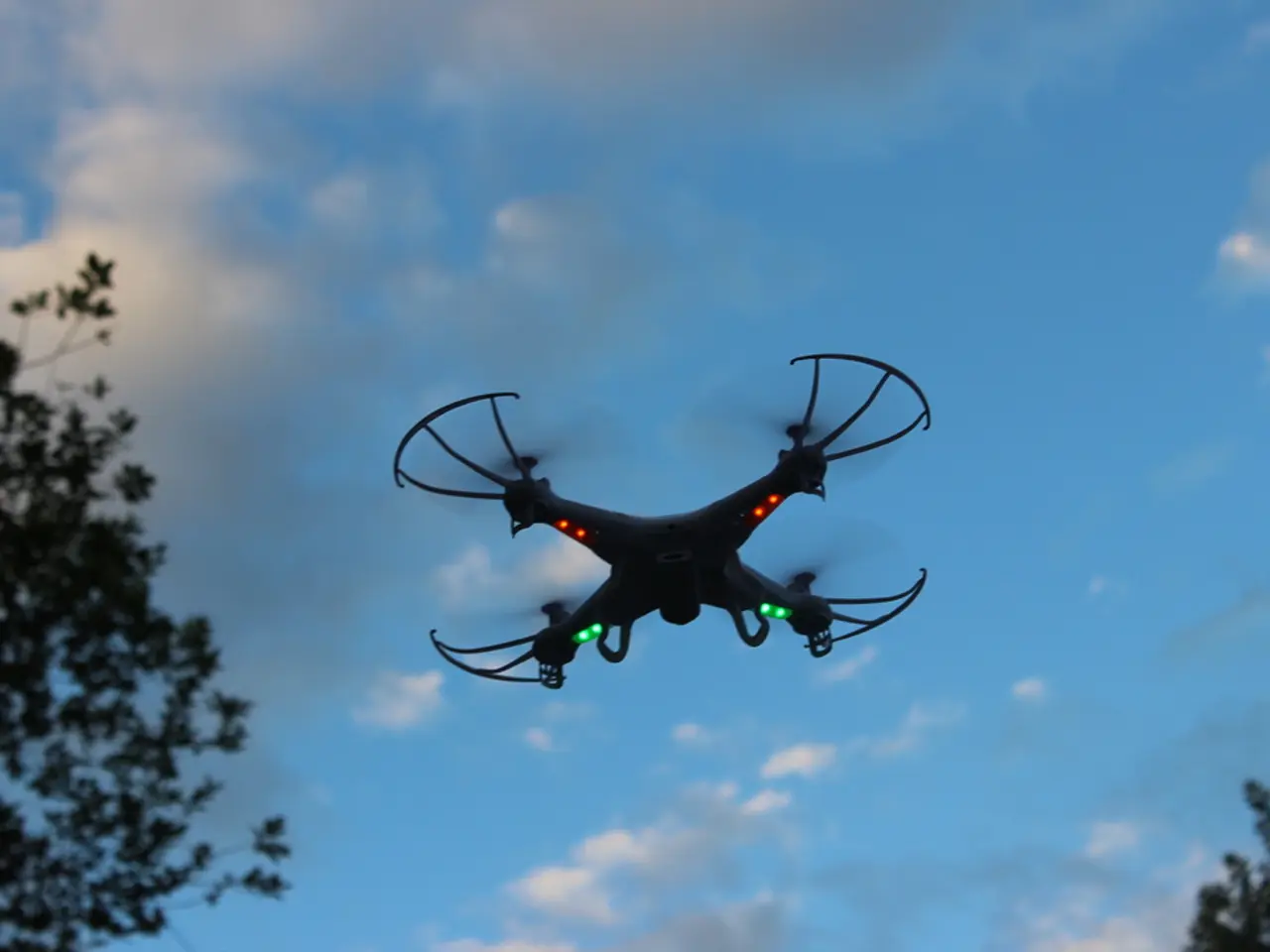Government suggests relaxing certain limitations on drones' long-range flight capabilities
The federal government has proposed a new rule that could revolutionize commercial drone operations in the United States. The rule, announced in August 2025, allows drone operations beyond the visual line of sight (BVLOS) of the operator up to 400 feet above ground level and for drones weighing up to 1,320 pounds including payload[1][2][5].
This rule is a significant departure from the previous cumbersome waiver process, streamlining the approval system to ease commercial drone use over longer distances[1][3][5]. It aims to facilitate various applications, such as deliveries, infrastructure inspection, agriculture, and more[1][3][5].
For safety and aviation purposes, the rule includes several key precautions. Collision-avoidance technology is required to keep drones away from manned aircraft, other drones, and to avoid interfering with airport operations, heliports, seaplane bases, and eVTOL facilities[1][2]. Drones must yield to all manned aircraft broadcasting their position via ADS-B (Automatic Dependent Surveillance–Broadcast)[2].
Operators must obtain FAA approval for flight areas, specifying boundaries, daily operation numbers, and takeoff/landing/loading sites, along with communication protocols for lost link situations[2]. The rule involves Automated Data Service Providers (ADSPs), which help keep BVLOS drones safely separated from other air traffic; these entities will be FAA-approved and regulated[2].
Drones are required to have proper lighting and must broadcast Remote ID to enhance identification and tracking[2]. The rule also streamlines airworthiness acceptance based on industry consensus standards rather than traditional FAA certificates, speeding up innovation and reducing costs[2].
The rule is a critical step toward ensuring the long-term business viability of drone delivery nationwide. Companies such as Amazon have already received waivers to use drones for some of their deliveries[1]. However, drone operators will have to go through background checks and be certified to operate drones out of their sight[4].
The government will accept comments on the new rule over the next 60 days before finalizing the rule[4]. Flytrex, a Tel Aviv-based drone delivery company, has expressed excitement about the proposed rule[5]. The FAA consulted with the Department of Homeland Security as it developed this rule to address security concerns, including potential military or terrorist attacks, espionage, drug smuggling, and disastrous collisions with airliners[1].
It's important to note that the rule does not apply to drones operated by individuals without FAA approval. The FAA has restricted drone flying in certain areas, such as during wildfires[3]. The rule is designed to address the way modern drones are being used today, balancing the need for innovation with safety concerns[1].
[1] - Federal Aviation Administration (FAA) News Release, "FAA Proposes Rule to Expand Drone Operations Beyond Visual Line of Sight," August 2025. [2] - Federal Register, "Federal Aviation Administration, Notice of Proposed Rulemaking; Remote Identification of Unmanned Aircraft Systems," August 2025. [3] - Federal Aviation Administration (FAA) Fact Sheet, "FAA Drone Regulations," August 2025. [4] - The Washington Post, "FAA Proposes Rule to Ease Drone Operations Beyond Visual Line of Sight," August 2025. [5] - DroneLife, "Flytrex Excited About FAA's Proposed Drone Rule," August 2025.
- The federal government's proposed drone rule could potentially revolutionize commercial drone operations in the United States, especially regarding deliveries, infrastructure inspection, agriculture, and more.
- Microsoft and Amazon, among other businesses in the technology industry, have shown interest in these developments, with Amazon already receiving waivers for drone deliveries.
- Seattle-based companies may benefit significantly from this rule, as the technology sector in cities like Seattle is known for its innovative approach.
- The new rule includes key safety precautions such as collision-avoidance technology, proper lighting, Remote ID broadcasting, and FAA-approved Automated Data Service Providers (ADSPs) to ensure safe drone operations.
- The transportation industry could also be impacted, considering that drones can potentially aid in infrastructure inspection and transportation applications.
- Potential issues like wildfires would still be subject to FAA-restricted drone flying regulations, ensuring that safety remains a top priority.




